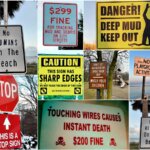






Teachers Are Quitting, Students Are Crying, and Parents Are Frustrated—Welcome to Kindergarten
I am a part of a Facebook group of over 66,000 kindergarten teachers. Every day, teachers in this group write posts about themselves crying alone in their classrooms.
Why?
The tears are due to the excessive demands being placed on kindergarten teachers and their tiny students.
These teachers are not weak. These teachers are stressed and concerned.
I started teaching kindergarten 25 years ago. First grade teachers viewed me as a rock star because the majority of my students had mastered their letters and sounds by the time they went to first grade.
I thought teaching the basics was hard. I had no idea what was coming. It seems that neither did the majority of my colleagues. Many got tired of crying in their classrooms. So what did they do? They chose to leave the profession altogether.
Peter Gray, psychologist and Let Grow co-founder, writes that the mass exodus of kindergarten teachers is a result of the stress and excessive demands that the new standards and policies put on them. Gray mentions that the kindergarten teachers who stay, even though they disagree with the rigorous curriculum, feel their hands are tied.
But are they? Maybe not. I believe teachers have the power to bring back or, at the very least, integrate play-based kindergarten in order to create independent, creative learners and thinkers. It’s not going to be easy, but we have to do something.
Standards-based kindergarten isn’t working.
According to a Washington Post article, “There is no available research that documents long-term gains from learning to read in kindergarten. Research shows greater gains from play-based programs than from preschools and kindergartens with a more academic focus.”
Kindergarten teachers and parents know this. They see their students squirm and struggle to listen and focus for long periods of instruction and seat-work. This environment is creating anxiety and animosity toward school at a time when there should only be excitement and love. It is no surprise, then, that the new standards were written with very little input from classroom teachers.
Teachers like me know that students should have a significant amount of time to play, talk, and laugh; but mandates are taking it all away. We can’t let it.
Standards-based kindergarten is forcing good teachers out.
Another popular refrain on the Facebook group is that kindergarten students are completely out of control and teachers can’t handle them. This behavior is partly due to lack of student opportunities to play, talk, and laugh. Children don’t play outside at home, there is less recess time, and free play in the classroom is virtually nonexistent.
I have a colleague who told me she was evaluated poorly, based on the fact that her students weren’t engaged in enough higher-level discourse. Has her administration actually spoken to kindergarten students? Do they know that the students can only stay on topic for five seconds before they take a sharp turn toward Halloween costumes, birthdays, and pretty unicorns?
All of these new practices create devastatingly low teacher morale. And Peter Gray agrees: “I’ve heard from many elementary school teachers who are quitting, or taking early retirement, because they are no longer willing to take part in an educational system that is harming children.”
Is there another option? Yes. I believe there is.
Close your door and teach.
We hear this all the time, but some of us are scared. We don’t have to be, though. Teachers are speaking up and doing what they know is right for their young students. And as a result, they are letting children play.
Now some teachers are doing this vocally and others are doing it more quietly. But The Close Your Door and Teach movement is motivating teachers to stand up, shut their classroom doors, and do what they know is right for their students. I see the movement gaining steam, and I hope it continues to do so.
Kindergarten teachers like me are dusting off those kitchen sets. They’re taking out the water and sand tables for exploratory learning. They are letting their students be kids again by encouraging free play in their classrooms and schools.
There are standards for free play.
Some classrooms and schools shy away from free play in favor of more structure, but I believe it holds a lot of answers. According “Crisis in the Kindergarten,” research indicates that play-based kindergarten students excel in creativity, social-emotional regulation, and overall intelligence when compared to strictly academic programs.
When students play, they are learning independence as they direct their own learning and activities without being told if they are right or wrong. Self-directed-learning activities produce students who are motivated, engaged, and creative. It’s a good thing when students are bored or figure it out on their own.
So what does this look like in a classroom? Let’s look at language. This is a core standard in kindergarten that can be associated with every type of free play. At my kindergarten reading center, students don’t have to sit quietly and try to decode words. They create stories to go along with the pictures and help each other make meaningful connections. Students love to play school. They have a natural desire to learn to read through play. It develops without drill and kill.
Free play isn’t chaotic. In fact, it’s the exact opposite.
Parents are taking notice.
I’ve seen my fair share of parents over the years. Yes, there are some that are pushing for structure and rigor in the classroom. They want their genius child to excel as quickly as possible. Kindergarten needs to be and do a lot of things to set their child on the right path of success. This is just one type of parent, though. We can’t get let these parents lead the way.
For the most part, I see parents that just want their child to excel. They are realizing that kindergarten standards and testing are out of control. They would much rather have their child play and develop socially and emotionally rather than learn the latest math or reading trend. But there’s not much they can do.
As a parent, it’s frustrating to watch. Kids are crying because don’t want to go to school. Kindergarten isn’t fun, and in some cases, it’s just too hard.
Shannon Ward, a parent of two boys, says, “My kindergarten son was coming home with stomachaches from the stress. [That] isn’t how I remember kindergarten.”
Parents feel the pressure to push their children to read but know that they, themselves, weren’t reading at age four and five. So they watch their children struggle.
Let’s swing the pendulum the other way.
Educators, like me, who have been around for awhile know that trends come and go, and then come again. The tide is changing and I am seeing more about letter kindergarteners have more free play, but, for such an important issue, maybe it isn’t changing fast enough.
So we need to keep pushing. Otherwise, we will continue to see kindergarten teachers quit, change jobs, or take early retirement. We will continue to see angry outbursts from students who have no other outlets. We will continue to see kids cry as they sit through computer-based hour-long standardized tests.
Unless we close our doors and let them play.



Comments are closed for this article.